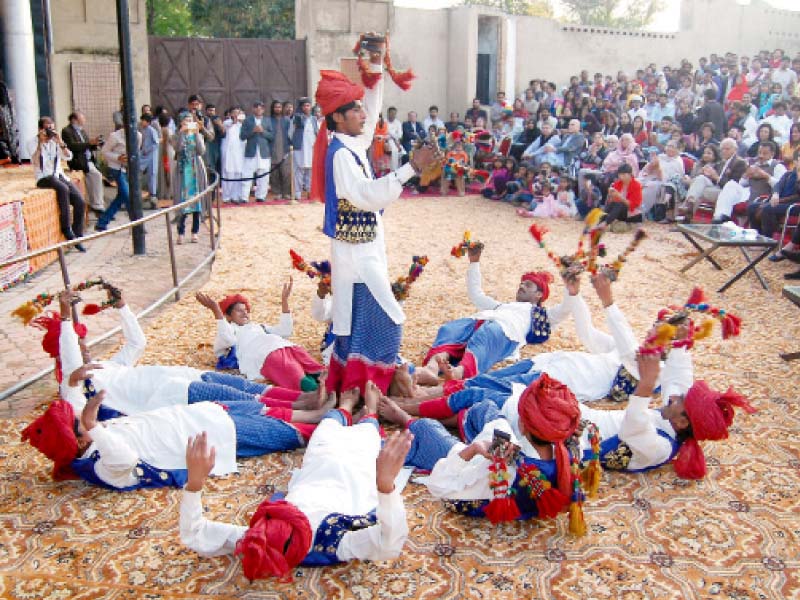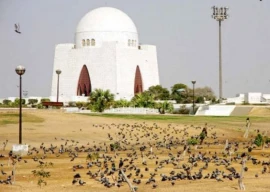
The festival organised by The National Institute of Folk and Traditional Heritage (Lok Virsa) here at Shakarparian kicked off on Friday. Some of the crafts the Lok Mela showcases, include camel bone and camel skin work, paper-thin pottery, khes, lungi, block making, metal work, blue pottery, farasi, khatta weaving, taghar, sharma or paloos, namda or yigin, and Chitrali and Kashmiri wood work.
The festival aims to apprise the youth about the richness of the country’s heritage as well as garner domestic and international support for helping finance local artisans.
Imdad Ali Vigio, who specialises in ‘block making’, a dying craft from the province of Sindh was honoured in a ceremony at the festival as recognition of his extraordinary skill.
Camel bone work remains one of the attractive crafts of Pakistan. The camel skin craft mostly comes from Multan. The skin of camel is washed, cleaned, shaped as desired on clay moulds and then painted with colours. The camel skin lamps are famous for their intricate and vibrant colours.
Paper-thin pottery is a type of unglazed pottery. It is a biscuit-coloured pottery decorated with carved patterns.
Ahmedpur-Bahawalpur (Punjab) is famous for producing delicate paper-thin perforated pottery from very fine clay.
Khes is a traditional cloth, which is hand-made through weaving, binding and mixing of patterns. The art of making khes first evolved centuries ago when this heavy, durable and intricate cloth was used as blankets; it later became an important export item during the Mughal era.
Lungi is a six-yard long piece of hand-loomed fabric with a border and a decorated ‘pallu’ or tail piece. Lungi is woven from cotton and come in a variety of designs and colours especially from Khairpur and Badin (Sindh).
Block making is laborious work and only few artisans are left, who carve traditional designs on wooden blocks in the areas of Tando Mohammad Khan, Matyari and Hyderabad (Sindh).
The wooden blocks are hand carved from trees indigenous to Sindh that is keekar, tali (sheesham) and others.
Metal work which was once common in cities and villages is now slowly and gradually vanishing due to its high cost and easy availability of imported metal ware.
The potters of Pakistan are one of the most neglected groups in the country. Despite the fact that blue pottery from Hala (Sindh) and Multan (Punjab) are famous world over.
Farasi making is a part of the traditional rugs made out of goat hair, camel hair and mixed yarn. The craft popular in Thar and Badin is dying due to high costs involved in the purchase of raw material.
The festival will continue till April 12.
Published in The Express Tribune, April 5th, 2015.
1731570357-0/elon-musk-(1)1731570357-0-405x300.webp)
-(1)1717678110-0/Kendrick-(1)-(1)1717678110-0-165x106.webp)






1732428532-0/BeFunk_§_]__-(43)1732428532-0.jpg)








COMMENTS
Comments are moderated and generally will be posted if they are on-topic and not abusive.
For more information, please see our Comments FAQ